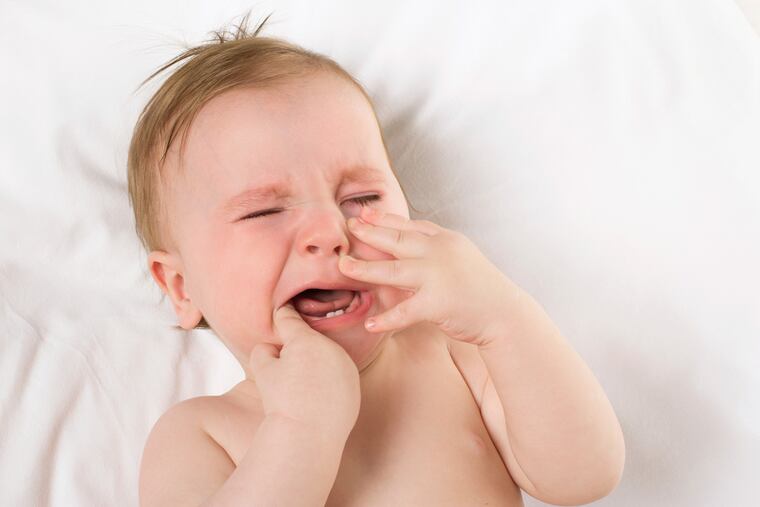Why you shouldn’t use teething jewelry
The U.S. Food and Drug Administration recently warned parents and caregivers not to use teething jewelry such as amber necklaces after receiving reports of death and serious injuries to infants and children.

When babies are teething, parents want to do whatever it takes to soothe them. But some options can be dangerous or even fatal. The U.S. Food and Drug Administration recently warned parents and caregivers not to use teething jewelry, such as amber necklaces advertised to relieve teething pain, after receiving reports of death and serious injuries to infants and children.
One report involved a 7-month-old baby who choked on a wooden bead teething bracelet while under parental supervision and was taken to the hospital. One tragic case involved an 18-month old infant who was strangled to death by his amber teething necklace during a nap. This adds to the many warnings about assuaging teething pain with topical or systemic pain medications either prescribed, over-the-counter, or folk.
Between the fourth month of life and the third birthday, many infants and children appear to have pain associated with drooling that we think occurs from the primary teeth breaking through the gums. In the past, many methods of relieving teething have been tried such as teething rings or sticks made of metal, hardwood, rubber and plastic.
Another method involved applying alcohol, lidocaine and even opiates to the gums or finally giving oral pain relievers such as acetaminophen, Ibuprofen, systemic alcohol, or narcotics. It is no surprise that all of these have been related to serious side effects. Even just tying the pacifier to a string and attaching the string to the baby’s shirt can result in strangulation if the cord is long or cutting off circulation to part of a limb as the baby twists all around.
“Consumers should consider following the American Academy of Pediatrics’ recommendations of alternative ways for treating teething pain, such as rubbing inflamed gums with a clean finger or using a teething ring made of firm rubber. Given the breadth of the market for these teething necklaces and jewelry, we’re sharing this important safety information directly to consumers in order to help prevent injuries in infants and kids,” said FDA Commissioner Scott Gottlieb, MD, in a statement.
Here are more in-depth recommendations from the AAP to safely soothe sore gums:
Chew toys. Plastic and rubber toys are great for soothing aching gums.
Cold things. For help numbing and easing the ache and inflammation, try using damp washcloths that have been twisted and frozen (tie one end in a knot for better gnawing). Avoid teething rings that are frozen solid; they are too hard for children's mouths.
Massage. A light, gentle rub or massage might give your little one a lot of relief. Remember to wash your hands, then massage the sore areas in your baby's mouth with your finger or knuckle.
Medicine. When your baby is having a really tough time, ask your pediatrician about giving a dose of acetaminophen such as Tylenol. Note: Numbing gels or creams that contain benzocaine are not recommended for infants.
Just holding the baby, walking the baby, swaddling and letting the baby suckle also helps. It’s important to keep in mind—sometimes babies drool and act fussy and the parent cannot completely stop it. Learning to soothe a baby without medication is always the safest alternative.
Gary A. Emmett, MD, FAAP, is a professor of pediatrics at the Sidney Kimmel Medical College of Thomas Jefferson University.